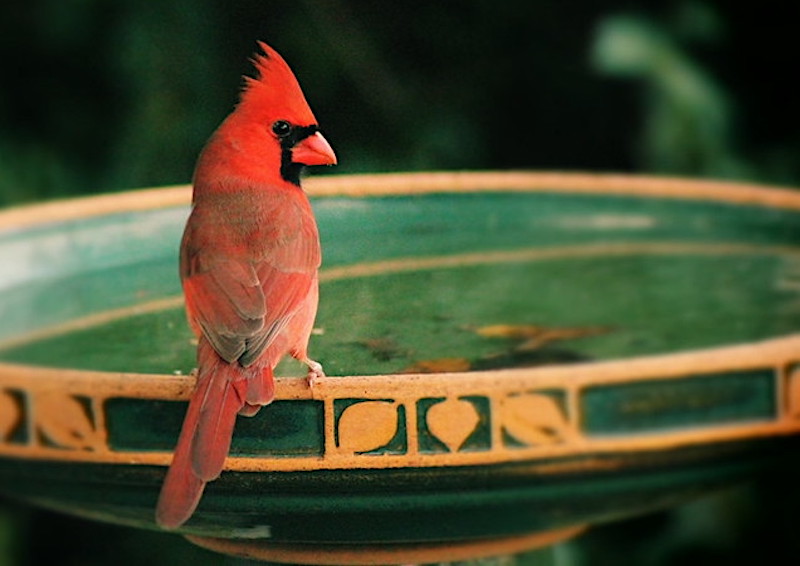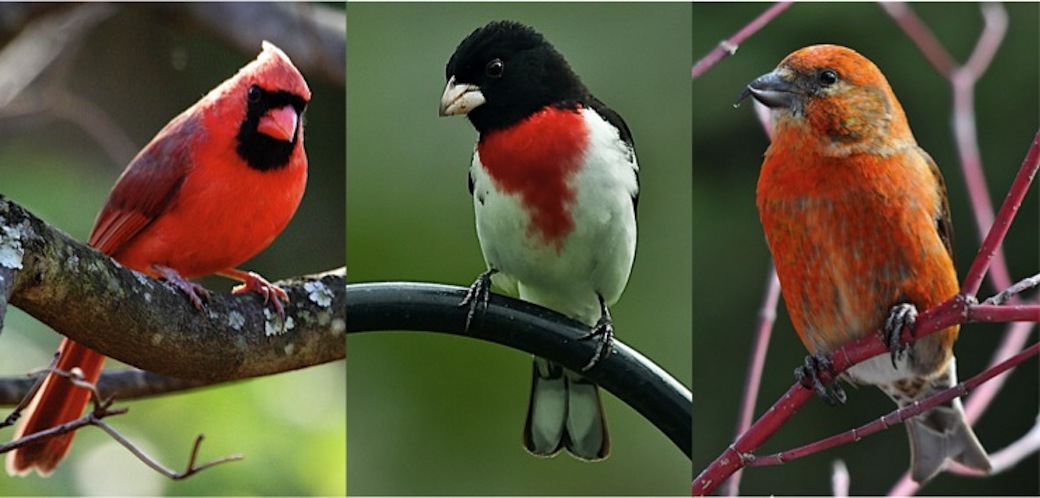BY KIERAN LINDSEY, PhD
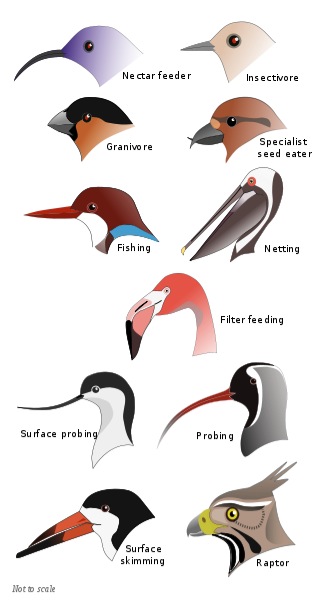 Ever wonder why hens’ teeth (and any other kind of avian teeth for that matter) are rare? It’s because teeth are heavy. That’s a problem if you live life on the wing but can’t use a knife and fork to cut your meals up into easy-to-swallow morsels. A bird’s beak (aka bill) is an adaptation to flight that serves most of the same functions toothy choppers handle in Earth-bound creatures, but without the high metabolic cost of carrying around a set of pearly whites.
Ever wonder why hens’ teeth (and any other kind of avian teeth for that matter) are rare? It’s because teeth are heavy. That’s a problem if you live life on the wing but can’t use a knife and fork to cut your meals up into easy-to-swallow morsels. A bird’s beak (aka bill) is an adaptation to flight that serves most of the same functions toothy choppers handle in Earth-bound creatures, but without the high metabolic cost of carrying around a set of pearly whites.
The beak is a sheath of tough skin on the upper and lower mandibles. Wild birds exploit a wide array of feeding resources and niches, and they are aided in this task by a startling diversity of beak morphology (see Figure A). For example, nectarivores (nectar-eaters), including hummingbirds, usually have long, straw-like beaks that reach deep into flowers. Insectivores (insect-eaters) tend to have narrow, slightly curved beaks that can reach into the small crevices where their prey try to stay out of sight. Piscivores (fish-eaters) have a sharp hook, serrated edges, or both, that help them hold on to their slippery supper. Some of the most distinctive beaks, though, belong to nutcrackers.
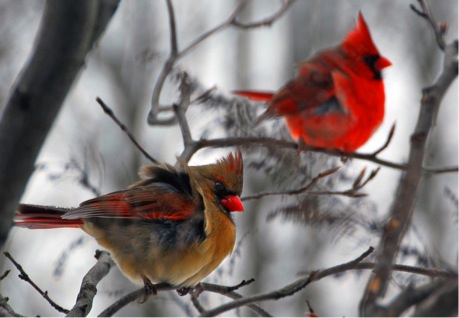
The Northern Cardinal (Cardinalis cardinalis) is a familiar and popular resident of cities and suburbs, including the Lafayette Square neighborhood, possibly because it’s so easy to spot and identify. It’s so popular, in fact, that seven U.S. state legislatures have chosen this species to be their avian poster child. At 8½—9” (21—23 cm) from jaunty crest to tail tip, it’s a medium-sized songbird with a stereotypic nut- and seed-busting beak—short, stout, and cone-shaped.
Cardinal beaks can crush more than seeds, as I can personally attest. From time to time a cardinal would find its way, with the help of a kindly Samaritan, to the Houston wildlife rehabilitation center where I used to work. When this happened, I would stand at the intake desk, teeth clenched, trying to muster enough courage to open the shoe-box that had been handed to me.
Now, I like cardinals as much as the next person—I’m from St. Louis, after all, where you can walk down any street in the whole town and know you’ll see someone wearing a shirt adorned with a bright crimson bird perched on a baseball bat. You’d think that would make me an insider of sorts, an honorary member of the family who’s entitled to an extra measure of leniency. Hardly. Every time I’ve held a cardinal in my hand, no matter how gentle the exam or treatment, I was rewarded for my efforts with a throbbing blood blister on my palm, administered by a tiny but furious red vice-grip.
Who would have guessed you could feel empathy for a sunflower seed?
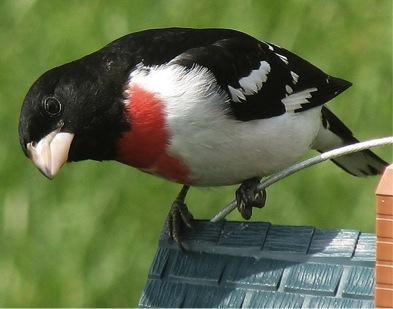
The Rose-Breasted Grosbeak (Pheucticus ludovicianus), whose breeding range includes my fair city, is slightly smaller (7—7½” or 18—21 cm) with a pale, conical bill reminiscent of the cardinal’s, only more zaftig… a chestnut to the redbird’s hazelnut. Of course, it’s natural for kin to resemble one another, and the RBG is, in fact, one of 17 species known as the “cardinal-grosbeaks.”* Grosbeak—from the French grosbec (gros thick + bec beak) is an apt appellation for this striking black and white bird with a cherry cravat (the females prefer a more sedate, sparrow-like wardrobe).
Compared to the schnozes sported by some members of the Cardinalidae clan, the RBG has a proud but modest snoot. Although not as common as its stop-light colored cousin, human development—and the fire suppression policies that accompany it—have caused forests to sprout where once only grasses grew, allowing the RBG to expand its breeding and migration range westward (although the Rocky Mountains have proven to be a tough nut to crack). They’ve become a more frequent visitor to backyard bird bistros, where they like to snack on safflower, cracked corn, and black-striped sunflower seed. Insects and fruit are part of their diet as well, but seeds account for the majority of their calorie intake, especially during winter months.
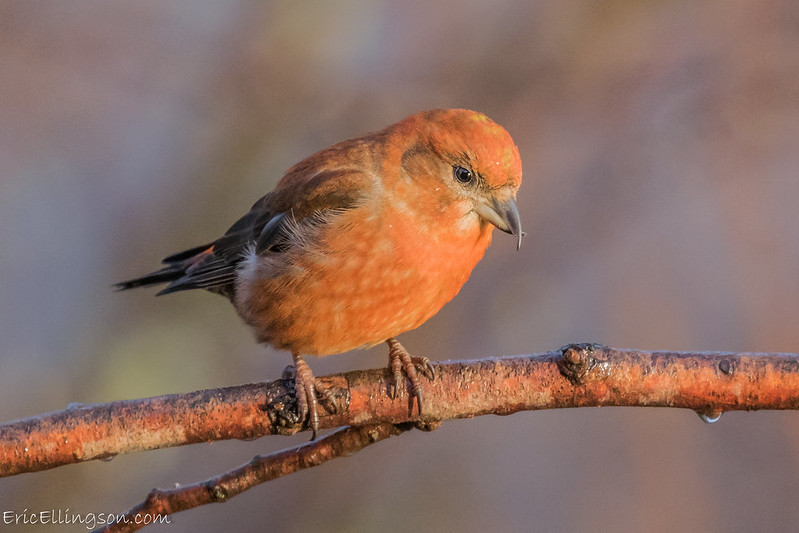
The beak says it all—Red Crossbills (Loxia curvirostra) are true specialists, and a rare sight here in Arch City. At first glance you might think this is a bird in dire need of an orthodontist, but that oddly shaped bill allows them to force open conifer cones and extract the tasty nuts inside. The muscles that allow birds to bite down are stronger than the ones used to open their beaks.
But unlike cardinals and grosbeaks, who can clamp down with great force on tough-hulled sunflower seeds (and tender wildlife rehabilitator hands), the crossbill wedges the slightly opened tips of its bill between the scales of a tightly closed pine cone and then bites down, pushing the scale up to expose the kernel.
The crossbills are extremely dependent on conifer seeds—wildlife biologists refer to animals whose very existence depends on a narrowly-defined habitat or food sources as an obligate species. Most granivores (seed-eaters) start their lives eating protein-rich insects, making a dietary change when they reach adulthood, but crossbills feed on seeds from cradle to grave.
Of course, there are risks associated with being a specialist… we’ve all been warned against “putting all your eggs in one basket.” But as long as long as you follow the advice of fellow Missourian Mark Twain and “watch that basket!” there are benefits to be had as well. For example, Red Crossbills can raise young any time of the year—even during winter—as long as the cone crop is abundant.
